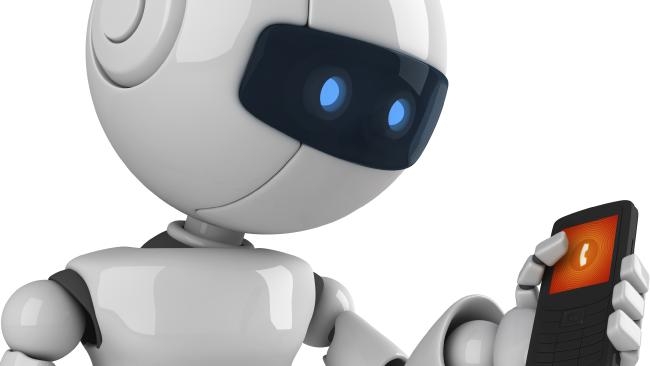Reading: There is a special foreign term "millennials" (born 1984-1995) who were born almost simultaneously with the computer and grew up with the Internet. They read the words "the boss is standing by the sidelines." Workplace. They are accustomed to multi-tasking, have a flexible mind, and skillfully use high-tech products to extend their power. What's more, they are truly "workplace aliens." You must not ask them to share the communism with the company because they only share the same difficulties with themselves.
Insecurity and high consumption are the characteristics of this generation, but they are not pure materialists. Surveys show that friendship, family, and family values ​​are among the first of their values. They do not believe that a stable job is very valuable and will not work hard. Pursue this.

The way to get Millennials is a chat robot
For brands, attracting millennials is getting harder and harder. Unfortunately, millennial spending power is skyrocketing.
No wonder, the brand is willing to pay millions, even tens of millions of funds to develop App and buy mobile advertising, in order to attract the attention of the younger generation. However, most of the money was wasted on advertisements and media that were useless to Millennials.

To succeed, brands must make Millennials know that they are no longer investing in traditional marketing channels that they have used. So where is the Millennials? Millennials spend the most time on SMS chats compared to other forms of communication. Today, SMS Chat Apps are bigger than social networks, and this shift is largely driven by millennials.
Conversational business uses SMS for trading and sales, which is a great opportunity to use SMS app and robots to drive revenue. Although terminology such as robots and SMS robots are also commonly used, the high-tech industry has a unified term “chat robot†to describe software that can simulate talking to people. Although consumers may be unfamiliar with the term, many of the regular interactions with virtual assistants such as Siri and Alexa convey this conversational experience. The key change is that chat bots are directly targeting Millennials' communication preferences and helping the brand get this generation.
Why do brands need to take chat bot seriously? There are several reasons for this:· Robots can use Millennials’ favorite communication method—text messaging—to provide brands with “fertile ground†to attract them.
Chatbots provide the brand with a powerful ability to hunt in prey areas. Nearly 75% of global network users use SMS services early on, and the dominant group is the Millennials. Just like the text-based communication rules of young people, technology leaders such as Apple and Facebook have begun to pay attention and invest in robots to help brands attract Millennials.
As the big names join the field, millennials are beginning to become familiar with robots. Currently there are more than 18,000 robots in Facebook Messenger, which makes it easier for users to do things such as making phone calls or checking the weather. And it's not just Facebook. The popular workplace communication tool Slack and the SMS application Kik also have countless robots. Among them, users sent a total of nearly 2 billion text messages to the brand's chat machine.
The success of the chat bot is that there is no need to download the app, which reduces the conflict and allows the brand to reach out to those millennials who are already highly active channels, including SMS, Facebook, Messenger, Whatsapp and more.
· To succeed with Millennials, the brand's mobile strategy must continue to expand beyond apps.
The common way to reach Millennials on smart phones is to build an App. The reason is simple. App has a great influence on this generation. However, once you enter the App Store, you do not need to download or retain the warranty application. In fact, research shows that 80% - 90% of apps are used only once and then they are uninstalled. This does not include applications that are lost in the shuffle and are never looked for. Fortunately, because of the existence of chat bots, the brand has hope.

The robots use the existing infrastructure of SMS applications, which greatly reduces the cost of development, deployment and maintenance. Thanks to the seamless integration of robots and information platforms, developers can more easily push content directly to users without having to manually check their apps, which saves money and time and reduces conflicts.
SMS apps have reached critical mass. If brands want to stay connected with Millennials, they need to be with them. Although we have all heard of App fatigue, SMS users actually want brands to interact with them. A recent study showed that 79% of respondents stated that they may be exposed to the brand category in SMS Apps. Unlike other apps, these SMS apps do not go anywhere; they are said to be 5.6 times higher – 12 months of retention.
Because robots exist in these popular SMS channels, users can easily interact with the brand without searching, downloading, or updating the App. In addition to ease of adoption, conversations with chatbots can mimic human interactions, making it more natural and fun, giving users an engaging experience.
· Access to millennial consumers remains a challenge for marketers and it is very important.
There are more than 80 million Millennials in the United States, but most brands have not won their attention. In fact, Millennials are still the least-attractive generation of consumers, but this is not due to lack of advertisers to try.
The navigation of digital landscapes and catering to Millennials’ changing preferences in these channels has largely hampered brands. As a result, they missed a huge opportunity. The collective purchasing power of Millennials was estimated to be US$200 billion, and by 2017, its purchasing power was stronger than any other generation.
In the next one to two years, the use of SMS and chat robots to promote the brand of conversational business will enjoy a clear competitive advantage. For some brands, the benefits of these robots may be higher than e-commerce.
Via:VB
Recommended reading:
Depth: Decoding the chat robots that giants are concerned about
The $200 billion market for chat bots, do you want to join?
![<?echo $_SERVER['SERVER_NAME'];?>](/template/twentyseventeen/skin/images/header.jpg)